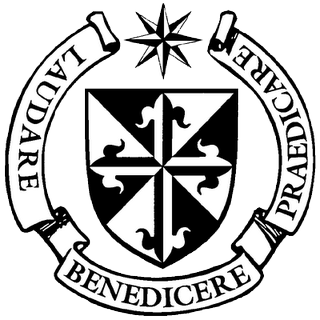Happy Feast of Our Lady of the Rosary
Dear brothers, it is an honor for us to have Our Lady of the Rosary as patroness of
our province. Who could be better? Who could better take care of us? The mother
of our Lord, the mother given to us by our Lord. Giving her to us, Jesus was giving us
himself. And Mary is giving us her son. What better present she could give us? ̈Do
whatever he tells you! ̈, she tells us. Mary introduces us in the meditation of the
mysteries of her Son, the mysteries she first lived. She introduced us in the
contemplation of the word of God, her Son, contemplation who made our Father
Dominic to be an evangelical man.
May though the intercession of Mary, the words and deeds on her Son inspire us to
make a dwelling place in us and renew our Dominican way of life as preachers of the
Gospel, and evangelical man.
Fraternally
Fr. Ruben Martinez OP
Feliz fiesta de Nuestra Señora del Rosario
Queridos hermanos, es un honor para nosotros tener a Nuestra Señora del Rosario
como patrona de nuestra provincia. ¿Quién podría ser mejor? ¿Quién podría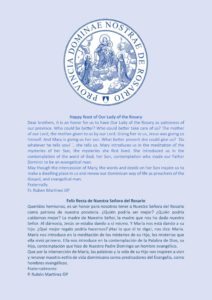
cuidarnos mejor? La madre de Nuestro Señor, la madre que nos ha dado nuestro
Señor. Al dárnosla, Jesús se estaba dando a sí mismo. Y María nos está dando a su
hijo. ¿Qué mejor regalo podría hacernos? ̈¡Haz lo que él te diga!, nos dice María.
María nos introduce en la meditación de los misterios de su Hijo, los misterios que
ella vivió primero. Ella nos introduce en la contemplación de la Palabra de Dios, su
Hijo, contemplación que hizo de Nuestro Padre Domingo un hombre evangélico.
Que por la intersección de María, las palabras y la vida de su Hijo nos inspiren a vivir
y renovar nuestro estilo de vida dominicano como predicadores del Evangelio, como
hombres evangélicos.
Fraternalmente
P. Rubén Martínez OP
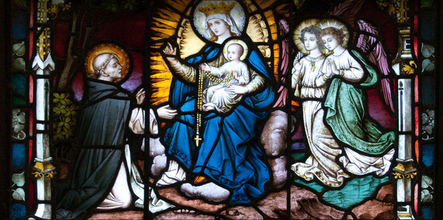
The Province of Our Lady of the Rosary was founded to preach the Gospel in the Philippines, in China, and the rest of the nations of the Far East.
It was the first Bishop of Manila Msgr. Domingo de Salazar, O.P., who contributed effectively to the foundation of the said Province. This Dominican priest was nominated by Philip II, King of All Spain, to Pope Gregory XIII as the first Bishop of the Philippines in 1578. Two years earlier Fray Domingo had returned to Spain from Mexico. At that time, he immediately began to recruit volunteer friars from the Priories of the Iberian Peninsula for the challenging task of the Evangelization of the Philippines. Of the eighteen religious who took ship with the new Bishop, leaving Spain for Mexico on July 10, 1580, seven died on the passage between Spain and the New World, as victims of a pestiferous illness which infested the ship they had boarded, and others died after arrival in Mexico. Some of the survivors opted to remain in Hispanola (Santo Domingo) and others to stay in Mexico. However, Bishop Domingo de Salazar, accompanied by Cristobal de Salvatierra, arrived at last in Manila on September 17, 1581.
Before leaving Mexico on his way to the Philippines, Bishop Domingo de Salazar handed over to Fray Juan Crisostomo the task of accomplishing what was involved in the project of founding the new Province. When Fray Crisostomo returned to Spain in 1581, he obtained from the Council of the Indies the permission needed for taking twelve religious to the Philippines, dated March 31, 1582. A few months later, on July 14, the Master of the Order, Fray Paolo Constable de Ferrara, gave his approval for the foundation of the new Province, naming Fray Crisostomo as its Vicar General with all the prerogatives of a Provincial. Furthermore, the Master authorized the Vicar General to take with him some forty religious of our Provinces in Spain and ten more from Mexico and Chiapas (which included what is now part of Guatemala). Shortly afterward, on September 17, 1582, the Master of the Order passed away from earthly life. At this point Pope Gregory XIII intervened, confirming Fray Crisostomo in office as Vicar General and giving his Apostolic Approval for the foundation of the new Province. This was proclaimed on October 20, 1582.
As things turned out, Fray Crisostomo was not able to take ship with his first band of religious as soon as he had thought to do so. Difficulties in Madrid blocked his plans. After two years of waiting in the Convent of San Pablo in Seville, he finally received the Royal Pass on August 9, 1585, granting him the needed permission to gather some Friars and to accompany them to the Philippines, including fifteen more from America. After several months, forty religious, proceeding from various Priories in Spain, left and headed for Mexico on July 17, 1586. Later, Fray Crisostomo resigned as vicar general and handed over his office to Fray Juan de Castro, who became the leader of the first expedition.
When the group had arrived in New Spain (Mexico), the new Vicar General, Fray Juan de Castro, in union with several of the religious, prepared, presented, and signed the Primordial Ordinances of the Province at the Priory of Santo Domingo in Mexico City on December 17, 1586. Those who were not present at this act later approved of it on January 17, 1587. Of the forty religious who took ship from Cádiz, according to the official list preserved in the Archives of the Indies, many fell ill in the course of the sea voyage, and three died in Mexico City because of their sufferings and deprivations during the long crossing. Some stayed in Mexico City, and others returned to Spain. Finally, three friars left for Macau on April 3, 1587, and fifteen others left for Manila on April 6. This last group reached the port of Cavite in the Philippines near Manila on July 22, 1587, and arrived three days later, on July 25, to the City of Manila.
On August 4 of that same year, the Feast of Santo Domingo was celebrated publicly for the first time, and, the next day, the cornerstone of the future Priory of Santo Domingo in Manila was laid on the Feast of the Assumption of the Blessed Virgin.
The new Province, with God’s blessing and as an outcome of strict regular observance, grew rapidly in its various ministries as well as the number of religious in its ranks. In 1592, the conditions had been met for recognition of the group as a Province in the Order. For this reason, the General Chapter of Venice of that year recognized the new Province of the Order under the title of Our Lady of the Rosary for the Conversion of Unbelievers.
Nonetheless, due to an error or oversight, the Decree of Erection and Establishment of the Province of Our Lady of the Rosary did not appear in the Acts of the General Chapter mentioned. The letter of the Master General, Fray Hipolito Maria Becarria, dated November 3rd, 1592, as sent to our Province, clearly states what took place. In the said letter, the Master General bears witness that in the General Chapter of Venice, the new Province was officially erected and instituted as a Province within the Dominican Order with the name of Our Lady of the Rosary. Later on, the said Decree of Erection, previously omitted, appeared in the Acts of the following General Chapter, celebrated in Valencia in 1596.
Denunciamus, quod in capitulo generali Veneto anno domini 1592 in provinciam erecta fuit congregation nostrorum fratrum, qui in insulis Philippinis commorantur pro infidelium conversione, sub titulo beatissimae Virginis de Rosario, etsi postmodum in eiusdem capituli actis tale decretum registratum non fuerit. (Acta Capitulo Generalis Valentiae 1596, cf. Acta Capitulorum Generalium Ordinis Praedicatorum, Vol. V ab anno 1558 usque ad annum 1600, iussu, Reverendisimi Padris Fr. Andraeae Fruhwirth, Romae, Ex Typographia Poliglotta S. S. de Propaganda Fidae, 1901, pag. 364)
The Friars of the Province have evangelized in the Philippine Islands since 1587; in Japan from 1602 until 1637, and again, since 1904; in Taiwan (Formosa) from 1626 to 1642 and since 1858; in Tonkin (Vietnam) from 1676 to 1955; in Venezuela from 1902 to 1905 and from 1951; in South Korea from 1989; in Singapore from 2001; in Myanmar (Burma) from 2010; in East Timor from 2013; and also in Peru, Sri Lanka (Ceylon) and other countries for short periods of time.
From the first days of the Province of Our Lady of the Rosary, new missionaries, nearly all from the Spanish Provinces, were arriving periodically to incorporate themselves into the Province and its ministries in the Far East. Furthermore, neither were lacking vocations, which came forward from the countries where the Province developed its apostolate. Among these, we encounter Mgr. Gregorio Lo, O.P., the first Chinese bishop.
Since the XIX century, the Province has relied on its own formation centers for future missionaries: in Ocana (1830), Avila (1876), Rosaryville-USA (1911-1935), Hong Kong (1935-1962), Manila (1962-1971), La Mejorada (1912), Santa Maria la Real de Nieva (1939), Valladolid (1953), Madrid (1958), Rome (1989), South Korea (1994), Hong Kong-Macau (2005), Myanmar (2010), East Timor (2013), as well as other apostolic ministries in Spain and in Rome.
Finally, as a fruit of the missionary dynamics and the fervent apostolic work of the Province of Our Lady of the Rosary, two new Provinces have arisen in the Order: that of Our Lady Queen of Martyrs in Vietnam, on March 18, 1967, and the Province of the Philippines on December 8, 1971. In like manner, a Vicariate General for our Chinese brethren who live in Taiwan was established on June 16, 1978, under the patronage of Our Lady Queen of China.
In 1987, the Province commemorated the Fourth Centenary of its foundation. The many events celebrated on this occasion were crowned by the Canonizations of sixteen Martyrs of Nagasaki on October 18, 1987, of sixty Martyrs in Vietnam on June 19, 1988, and of six Martyrs of China on October 1, 2000, by Pope Saint John Paul II in Rome. Pope Benedict XVI beatified 21 Martyrs of the 20th Century of Spain, on October 28, 2007.
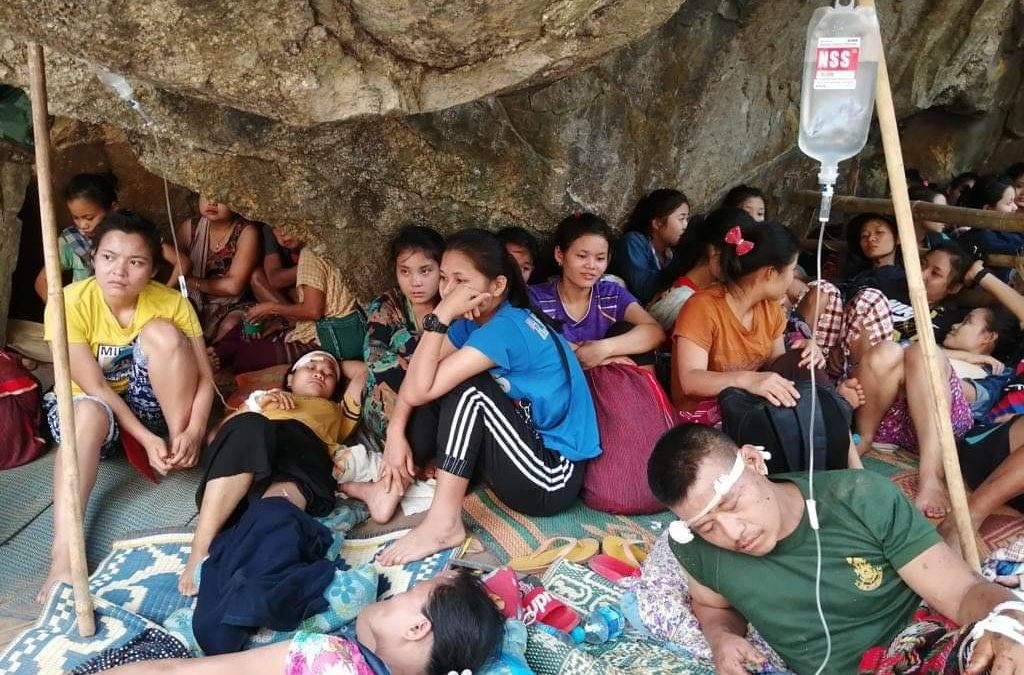
General Situation
On the 1st of February, the Myanmar military staged the coup and took political power. On that same day, the military detained the top government officials including President U Win Myint, State Counselor Daw Aung San Suu Kyi, and other political activists. Days after the coup, people poured into the streets and protested peacefully against the junta. As days passed, the anti-coup protest gained momentum and became larger and larger. In cracking down the protesters, the junta coup initially used water cannons and rubber bullets, and arrested whoever they could catch on the streets but seeing that people do not fear their suppression, they began to use live ammunition.
The first protestor to be shot in the head by live ammunition was Ma Mya Thwae Thwae Khaing, 20, from Nay Pyi Daw, capital of the country on the 9th of February. After the shooting of this young lady, the anti-coup protest even grew stronger and larger. To terrorize and silence the protestors, the military coup began to kill, torture, and arrested more people. However, the protest did not wane. As the military forces were becoming more violent in whatever they did, people began to build blocks or barriers in their quarters in order to prevent the military from entering and arresting them. But the military and police forces would burn those barricades, shoot, and arrest and torture everyone they could find on the streets. In some cases, the coup forces would even shoot to the houses from the streets, destroying the private properties, cars, and burning shops. In more extreme cases, the forces shot the passing by civilians on the streets and raided the houses at night shooting the family members including children, and looting the properties of the families.
The protest may have decreased in scale, but the people would still show their repugnance for the coup in every way possible. As the protest continues days and nights in all forms, people are being killed daily in every part of the country. The 27th of March, Armed Forces Day was the bloodiest day so far with at least 114 civilians reported dead by local news services. As of 30 March, (521) people were confirmed killed by this junta coup. The death toll could have risen much higher by now. The Assistance Association for Political Prisoners (AAPP) has compiled and documented a total of (2608) people being detained in relation to the attempted military coup.
In the latest escalating conflict, the military armed forces set fires on the residential houses in Mandalay in the early mornings of 30th and 31st of March and as a result, around 500 families are now homeless and are in dire need of help. Civil war is also escalating in the ethnic armed groups’ controlled areas. As the coup forces are losing outposts to the ethnic armed groups, they used fighter jets to launch airstrikes and shelled mortars into the villages, killing some civilians and injuring many others. Fearing airstrikes, thousands of villagers fled and crossed the Salween River and sought refuge in Thailand but they were forced to return to the Myanmar side by the Thai authorities. As it is not safe to return to their villages, the villagers are now hiding in the forest under the protection of rocks.
In the coming weeks, the situation could still get worse because more ethnic armed groups are said to be preparing for civil war. The civilians and ethnic armed groups are determined to eliminate the military from the political scene. Therefore, all will fight against this common enemy. Many people are in border areas are starting to dig holes in their backyards in case of war while the people in town start to defend themselves by making home weapons.
The situation of the Friars
Yangon: St. Dominic’s house is located in the neighborhood of the retired officials and therefore, it is relatively safe and peaceful there. Unless ill-hearted informers spread rumors about our brothers there, there is no real danger of being raided. However, Shwe Pyi Thar Parish, the parish that we are taking care of, is in the conflict area. Some parishioners were arrested and killed weeks ago. As garment factories were either burned or closed down, many parishioners are now out of work. With the help of some medical volunteers, Fr. Paul visited the affected areas and gave material and spiritual assistance to them. The donation received from Hong Kong has been handed over to Fr. Paul for the relief of his parishioners. The military forces patrol and lurk around the church campus every night that Fr. Paul and his workers have to be always watchful.
Loikaw: The brothers in Loikaw are relatively safe as well. The community is not so far from infantry and artillery. Those two units of the military are in our parish territory. Though the armies have not done any physical harm to the public, they regularly patrol in their trucks on the streets in the evening and terrorize the people by throwing sound bombs (stun grenade), shooting into the air, and giving warnings to stay indoors. If the ethnic armed groups come to attack those military forces, there might be a danger for the Friars. There is also a possibility that they raid the community, because seeing the buildings, they might think that we have money. The brothers are always on the watch.
Mandalay: The brothers in Mandalay are safe. The community is 40 minutes drive from the center of Mandalay. In Sint Kaing Township, only two protestors have been killed. Compared to other places, the protest here is not so robust and the people are not united. Those who want to protest do not dare to do it actively because there are spies everywhere. As a result, the protest died down easily. The military forces have raided some villages for protesting. However, Zaw Gyi, in which the brothers live, is surrounded by other villages that it seems the coup forces do not dare to come. However, everyone in the village is terrified and always watchful.
Fr. Moses Dereh, OP
Vicar of the Provincial for the mission in Myanmar
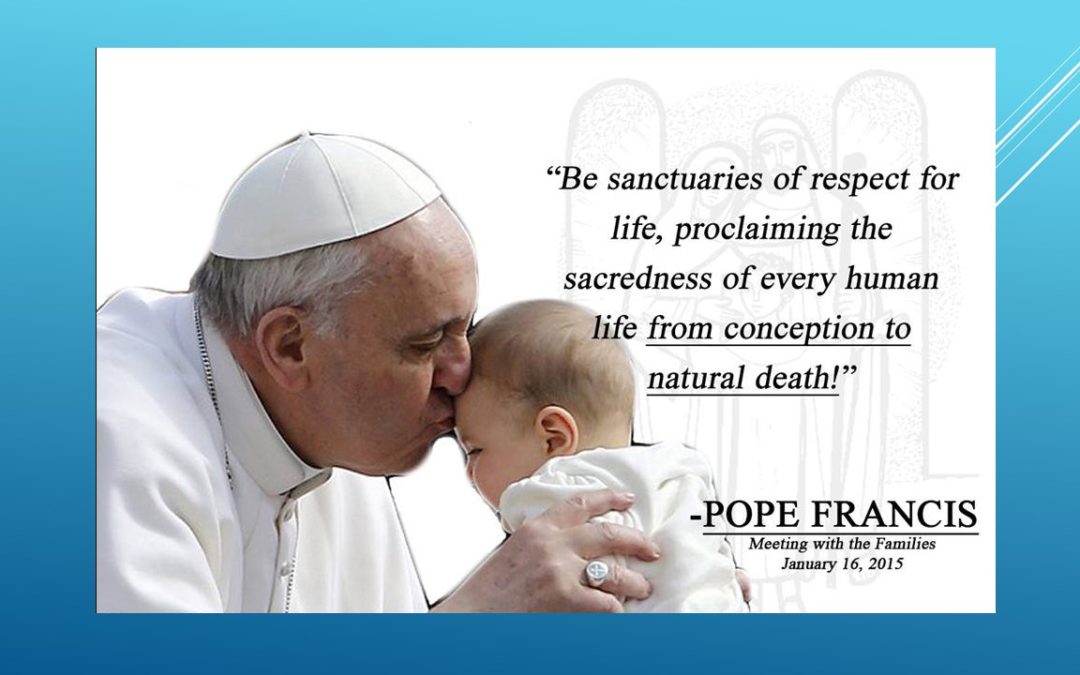
FAUSTO GOMEZ OP
After the election of Pope Francis, many people throughout the world expected profound changes in the Church, in particular on the divisive issue of birth control, including abortion. In a previous piece, the author considered the teaching of the Church on abortion today. In this second text, he presents the specific teaching of Pope Francis on abortion.
According to the secular press and some theologians and social activists, the Church appears to focus more on specific issues of sexual ethics than on concern for social ethics. Be that as it may, it is easy to prove that the Church in most countries is likewise focusing on the problems related to forced poverty. In fact, it is no exaggeration to affirm that as an institution the Church is – with others, but of course – among the first in working really for and with the poor. The face of the Church throughout the world is in general caritas. The teaching of the Church underlines not only her opposition to abortion but also her commitment to social justice and mercy: the social teachings of the Church are definitely pro-poor, and so is unmistakably Pope Francis from his first authoritative text Evangelii Gaudium (2013) to the last, Amoris Laetitia (2016). Needless to say that the Church, that is, members of the Church (priests, religious and lay persons), and many others continue failing regarding the practice of the Church teaching.
Concerns for sexual ethics and for social justice and peace are necessarily connected: Only respect for life can be the foundation and guarantee of the most precious and essential goods of society, such as democracy and peace (John Paul II, EV 101). Pope Benedict XVI says that one cannot separate sexual ethics from social ethics, because the issues are intertwined: Only if human life from conception until death is respected is the ethic of peace possible and credible; only then may nonviolence be expressed in every direction; only then can we truly accept creation and only then can we achieve true justice (Meeting with Bishops from Switzerland: November 9, 2006; cf. Id., Encyclical Caritas in Veritate, 2009, 15). Pope Francis states: This defense (of the Church) of unborn life is closely linked to the defense of each and every other human right. It involves the conviction that a human being is always sacred and inviolable, in any situation and at every stage of development (EG 213). Since the beginning of his pontificate, Pope Francis is focusing on the option for the poor. This option for or commitment to the poor includes necessarily the unborn children, who are the most defenseless. Before his election as Pope, the then cardinal Jorge Mario Bergoglio was, of course, openly against abortion. Likewise, after his election. Cardinal Bergoglio words: The pregnant woman doesn’t carry a toothbrush in her womb or a tumor. Science teaches that from the moment of conception, the new being has all the genetic code. It impressive. It not, therefore, a religious question but clearly a moral one, based on science (Quoted in book Pope Francis. Conversations with Jorge Mario Bergoglio, 2010 and 2012).
Furthermore, Pope Francis proclaims: The first right of the human person is his life; very unborn child, condemned unjustly to be aborted, has the face of the Lord, who before being born, experienced the rejection of the world (Message to International Federation of Catholic Medical Associations; September 20, 2013). Among the vulnerable, who the Church wishes to care with particular love and concern, are unborn children, the most defenseless and innocent among us (EG 213).
Pope Francis has called abortion a symptom of a “throwaway culture” that places too little value on human life. It is “frightful” to think about early pregnancy terminations. It is horrific even to think that there are children, victims of abortion, who will never see the light of day” (cf. Address to Diplomats Accredited to the Vatican, January 14, 2014). The Church cannot be expected to change her position on this question. I want to be completely honest in this regard. This is not something subject to alleged reforms or modernization. It is not progressive to try to resolve problems by eliminating a human life (EG 214). Pope Francis adds: Christ dwelt for nine months in the tabernacle of Mary womb (EG 285).
In an Address to the Italian Pro-Life Movement, Pope Francis affirms: We know it: human life is sacred and inviolable. Every civil right rests on the recognition of the first and fundamental right of life, which is not subordinated to any condition, either qualitative or economic and least of all ideological. The Argentinian Pope adds: For one who is a Christian, this evangelical witness must always be given: to protect life with courage and love in all its phases (April 11, 2014).
On April 25, 2014, Pope Francis spoke to a group of African bishops thus: Abortion compounds the grief of many women who now carry with them deep physical and spiritual wounds after succumbing to the pressures of a secular culture which devalues God gift of sexuality and the right to life of the unborn. Looking at the Child Jesus, my thought is directed to all the children that today are killed or maltreated, including those who will not see the light, robbed of the generous love of their parents, buried by the selfishness of a culture that does not love life (Pope Francis: Urbi et Orbi, Dec. 25, 2014, and Homily, Dec. 24, 2016).
In his Apostolic Exhortation Amoris Laetitia, Pope Francis reaffirms with clear and strong words the Church rejection of abortion: So great is the value of human life, and so inalienable the right to life of an innocent child growing in the mother womb, that no alleged right to one own body can justify a decision to terminate that life, which is an end in itself and which can never be considered property of another human being (AL 83). In his Apostolic Letter Misericordia et Misera (November 20, 2016) closing the Holy Year of Mercy the Pope affirms: wish to restate as firmly as I can that abortion is a grave sin, since it puts an end to an innocent life (MM 12, # 1). This is one side of the coin (true doctrine). The other side (merciful compassion) which completes the picture is worded by Pope Francis thus: “In the same way, however, I can and must state that there is no sin that God mercy cannot reach and wipe away when it finds a repentant heart seeking to be reconciled with the Father (MM 12, # 1). By the way, since November 20, 2016, the grave sin of abortion can be forgiven by every priest (MM 12, # 1).
Pope Francis is also very much concerned with the plight of women who have had an abortion or might be thinking of aborting the child in their womb. He said to the Italian Pro-Life Movement: “I encourage you to do so (to protect life) always with the style of closeness, of proximity: so that every woman feels regarded as a person, heard, received and supported.
The acceptance and practice of abortion introduce us into a tunnel. Sooner or later we will realize that unless we get out of the tunnel, there will be no scape: after abortion, euthanasia, after euthanasia, eugenics of different kinds: the slippery slope of a culture of death. As human beings, as Christians, we can do something against the tide of the culture of death. We may light a candle: you and me, and the other and the other. We are a family, which is a community of life and love. As Christians in particular, we are asked to show priority love to the poor and defenseless. We remember the words that Christ the Lord will hopefully address to each one of us after crossing the passage of death: Come in for what you did to the least of my brothers and sisters you did it to me (cf. Mt, 25:31-46).
May I humbly ask Catholics, my dear brothers and sisters, to please try not to be Cafeteria Catholics: those who among us seem to believe what we like only – what is easy! All of us love and praise to the heavens Pope Francis, but some of us keep quiet perhaps on what we do not like such as his sayings against abortion or against capitalism or against consumerism or against corruption or his insistence on the need of prayer or
As human beings and as believers, we believe in life and justice, in prayer and compassion. We truly believe in faithful, loving and prayerful hope. We strongly believe that tomorrow will be better, because today we try hard to put love in all we do to light a candle for life!
(Published by O Clarim, March 24, 2017)

